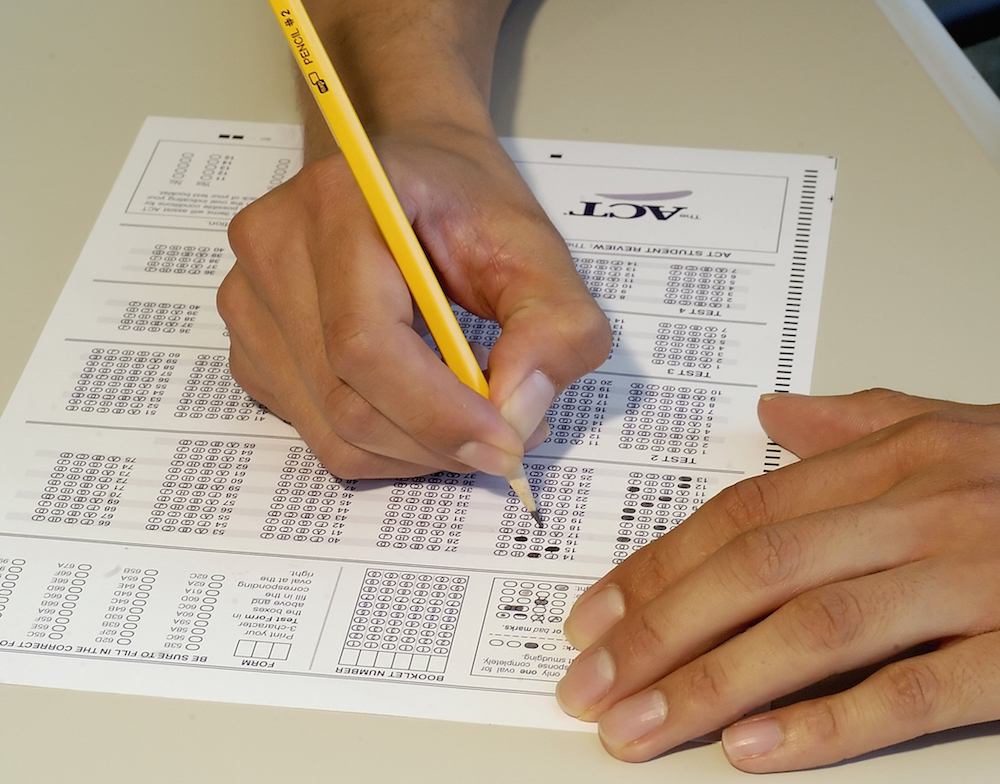Only about 30 percent of last year’s California high school graduates who took the ACT college entrance exam tested proficient in all subject areas.
The state’s best subject was English – 72 percent of students were considered ready for college freshman classes. In science, however, only 34 percent were deemed ready for higher education.
“In California, about half of entering freshmen at Cal State University need to take remedial courses in English, and about 40 percent have to do so in math,” said Hans Johnson, policy fellow with the Public Policy Institute of California.”There’s evidence that a large share of high school students are not ready for college – at least, not as ready as you would hope.”
The ACT measures proficiency in four academic subjects: English, reading, math and science. It classifies a student as college-ready in a subject if he or she has about a 75 percent chance of earning a C or better in a corresponding class.
While California exceeded the national average and has made modest improvements over the last five years, overall test scores mask significant racial disparities:
In English, 91 percent of whites tested ready for college classes; 49 percent of African Americans and 51 percent of Hispanics tested ready.
In mathematics, 76 percent of whites tested ready for college classes; 26 percent of African Americans and 35 percent of Hispanics tested ready.
In reading, 77 percent of whites tested ready for college classes; 33 percent of African Americans and 37 percent of Hispanics tested ready.
In science, 51 percent of whites tested ready for college classes; 10 percent of African Americans and 14 percent of Hispanics tested ready.
“There are indicators in California that suggest high school graduates are increasingly better prepared for college,” Johnson said. “At the same time, there are still large numbers and large shares that are not. There’s a (racial) disparity in test scores and outcomes starting as early as we test students in our K-12 system.”
Students who take “core curriculum” classes – four years of English and three years of math, social studies and science – are more likely to be ready for college than those who do not, according to a recent ACT report [PDF] on the data.
In math, 58 percent of students who took the core curriculum met college benchmarks for readiness, as opposed to 15 percent of those who did not take the classes.
In English, 72 percent of students who took the core curriculum met college benchmarks for readiness, as opposed to 49 percent for those who did not.
ACT Inc. offers a three-stage testing regime starting in eighth grade, testing again in 10th and then once more before graduation. According to this most recent report, students who take more rigorous classes earlier are better prepared to graduate from high school and be successful in college.
“Early assessment and intervention are very important in making sure students are on track for college readiness,” said Ed Colby, spokesman for ACT Inc. “It’s important that students know where their academic strengths and weaknesses are early on, that school officials and teachers are aware of what students’ goals are, how their academic skills match up.”
According to the data from this year, 8 percent of eighth-graders in California were meeting benchmarks for college readiness in all four subjects. In 10th grade, 25 percent of students were meeting the benchmarks in all four subjects.
The University of California and California State University systems accept both the ACT and SAT as part of their admissions process. This year in California, more than twice as many students took the SAT as did the ACT. Only a quarter of students in the state took the ACT exam, compared with roughly 50 percent nationwide.





